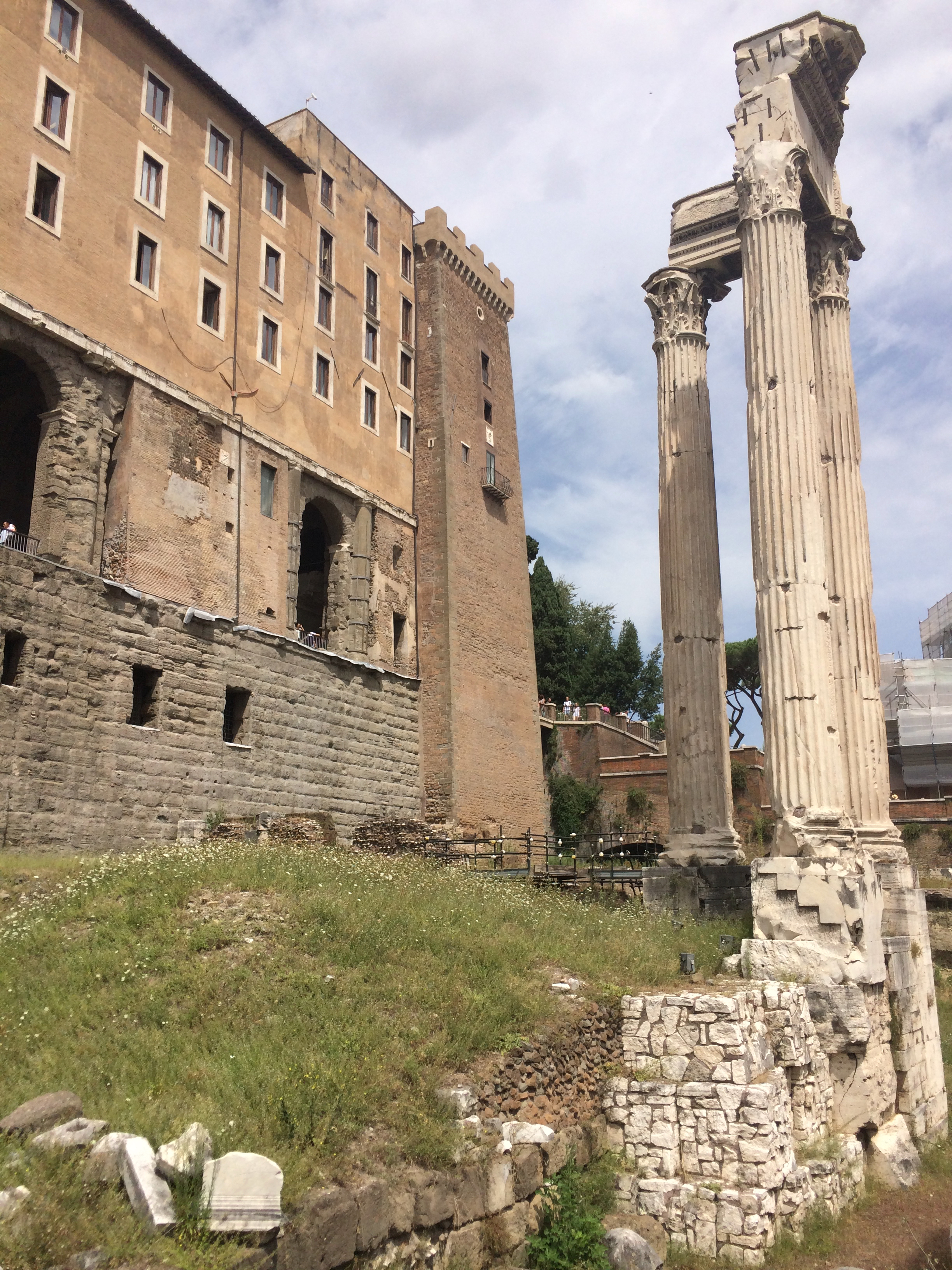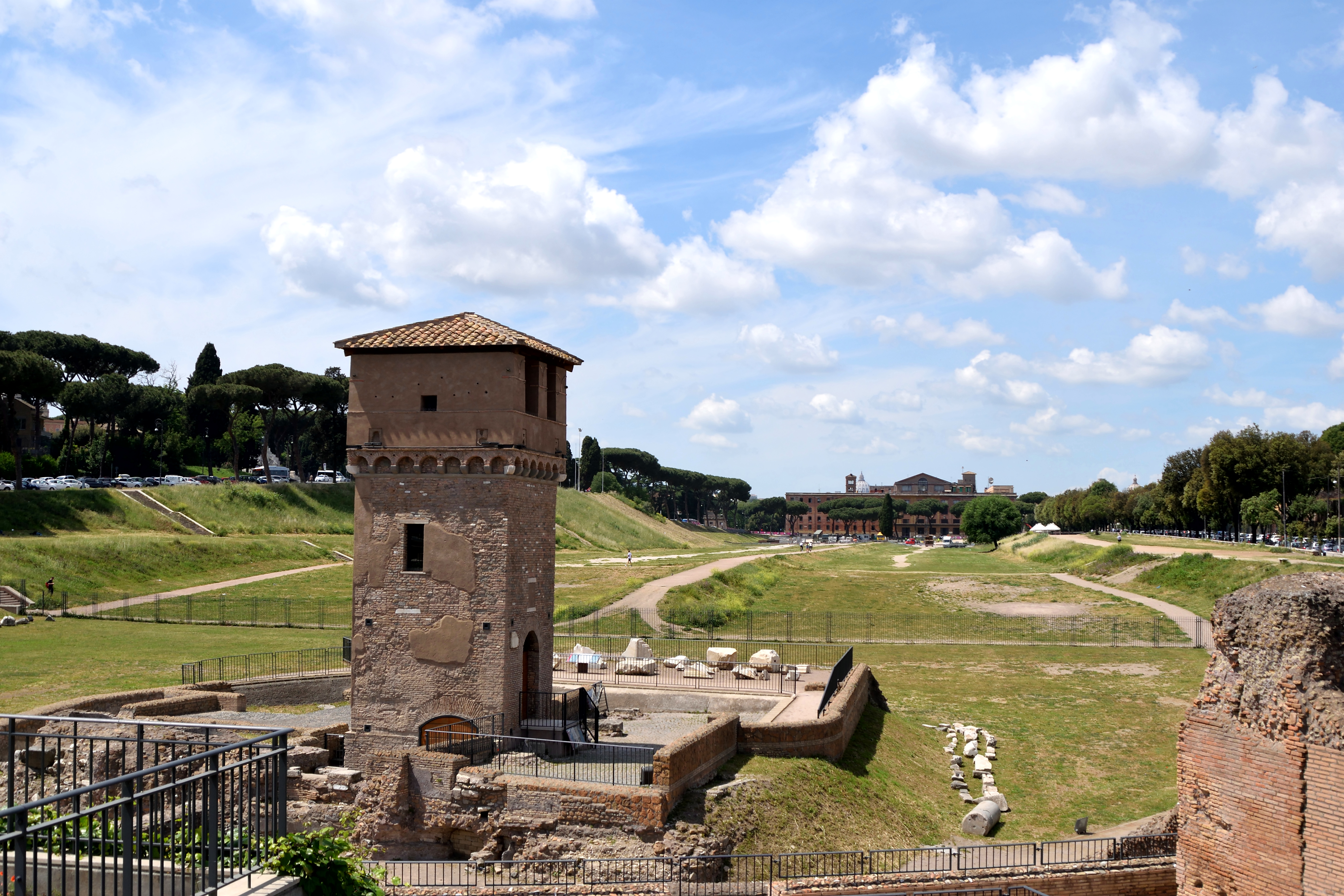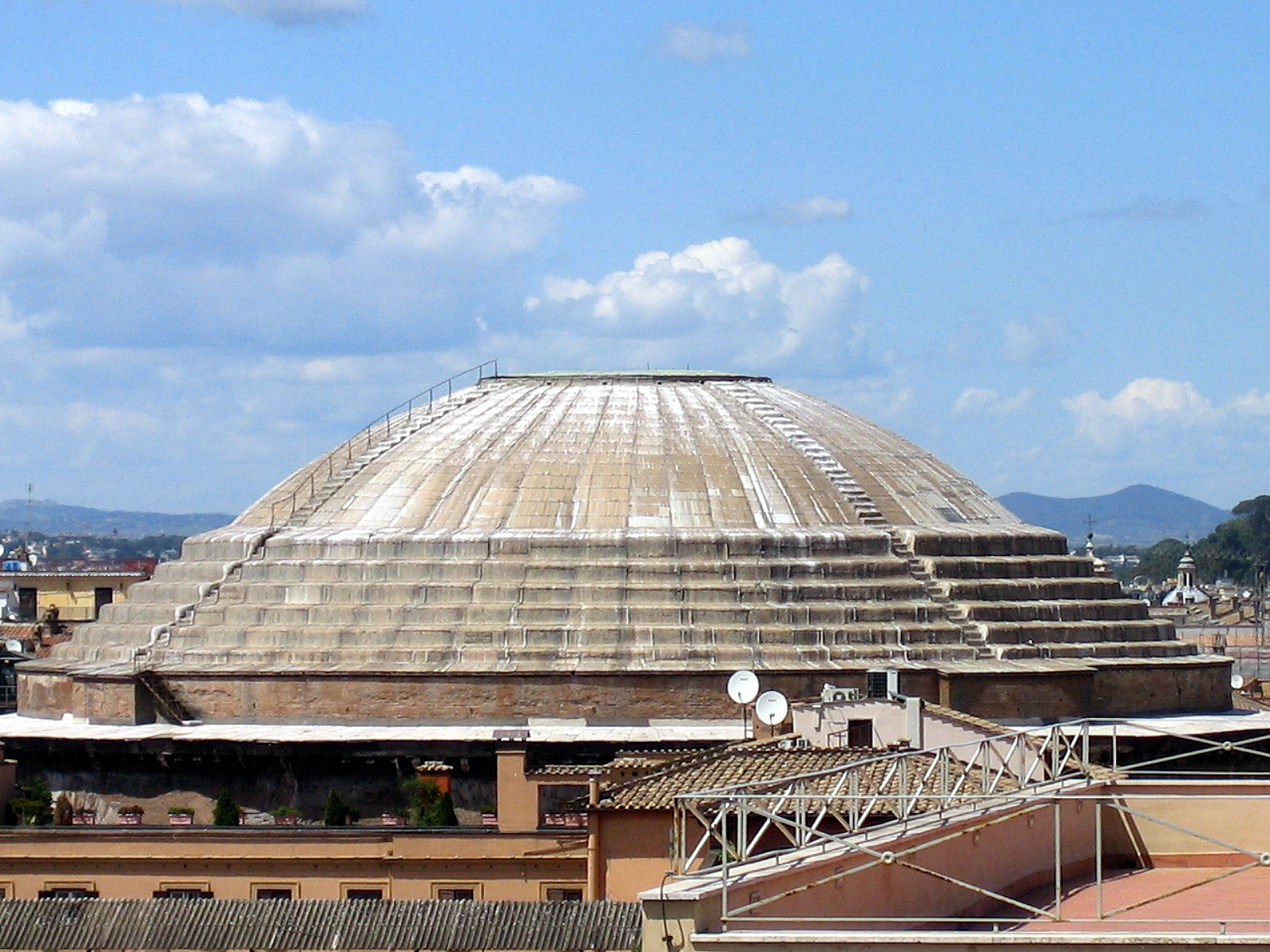|
Tabularium
The Tabularium was the official records office of ancient Rome and housed the offices of many city officials. Situated within the Roman Forum, it was on the front slope of the Capitoline Hill, below the Temple of Jupiter Optimus Maximus, to the southeast of the Arx. Within the building were the remains of the temple of Veiovis. In front of it were the Temples of Vespasian and Concord, as well as the Rostra and the rest of the forum. Presently the Tabularium is only accessible from within the Capitoline Museum, although it still provides a panoramic view over the Forum. The construction of the Tabularium was ordered around 78 BC by the dictator Lucius Cornelius Sulla. The building was completed by Quintus Lutatius Catulus, consul in 78 BC. This was part of a public works programme for the redevelopment of the Capitoline Hill, which had been damaged by a fire in 83 BC. The construction by Catulus is not mentioned in the ancient literature. It is known through an inscri ... [...More Info...] [...Related Items...] OR: [Wikipedia] [Google] [Baidu] |
Temple Of Vespasian And Titus
The Temple of Vespasian and Titus ( la, Templum divi Vespasiani,Platner, Samuel B., and Ashby, Thomas. ''A Topographical Dictionary of Ancient Rome''. London: Oxford UP, 1929; p. 556. it, Tempio di Vespasiano) is located in Rome at the western end of the Roman Forum between the Temple of Concordia and the Temple of Saturn. It is dedicated to the deified Vespasian and his son, the deified Titus. It was begun by Titus in 79 after Vespasian's death and Titus's succession. Titus’ brother, Domitian, completed and dedicated the temple to Titus and Vespasian in approximately 87. Importance Throughout Roman history, there was an emphasis on increasing the fame and glory of a family name, often through monuments commemorating the deceased. Therefore, the temple was constructed to honor the Flavian Dynasty, which comprised the emperors Vespasian (69–79), Titus (79–81), and Domitian (81–96). Historians question whether or not Titus and Domitian had a good relationship; ho ... [...More Info...] [...Related Items...] OR: [Wikipedia] [Google] [Baidu] |
Temple Of Veiovis
The Temple of Veiovis in ancient Rome was the temple of the god Veiovis. In literature The temple was sited in the saddle of ground "inter duos lucos", between two sacred groves, one on the Arx and one on the Capitolium (the two peaks of the Capitoline Hill). The statue of the god stood next to a statue of a goat. In the same area was also situated the Asylum, where, legend has it, Romulus extended hospitality to fugitives from other parts of the Latium region, in order to populate the new city which he founded, with political refugees, escaped slaves, Latins and Etruscans, and, as Florus has it, Phrygians and Arcadians. Florus, I.9, noted by Emma Dench, ''Romulus' asylum: Roman identities from the age of Alexander to the age of Hadrian'' (Oxford University Press) 2005, p. 2 note 4. Its construction was vowed in 200 BC by the praetor Lucius Furius Purpurio in the Battle of Cremona during the war against the Boii, and then dedicated in 192 BC by Quintus Marcius Ralla. I ... [...More Info...] [...Related Items...] OR: [Wikipedia] [Google] [Baidu] |
Regio VIII Forum Romanum
The Regio VIII Forum Romanum Magnum is the eighth regio of imperial Rome, under Augustus's administrative reform. Regio VIII took its name from the Roman Forum, the political centre of Ancient Rome. Geographic extent and important features Regio VIII was the central region of Rome, both geographically and politically. In extent, the region was bordered by the Servian Wall to its northeast and the Palatine Hill to the southeast, while the western outcrop of the Quirinal Hill and the Via Sacra formed its eastern boundaries. It therefore included the Capitoline Hill, the valley between the Palatine and the Capitoline hills (where the Roman Forum is nestled), and the area between Velian Hill and the Palatine just before the point where the Arch of Titus straddles the Via Sacra. A measurement taken at the end of the 4th century recorded that the perimeter of the region was 13,067 Roman feet (approximately 3.86 km). The region was dominated by the massive sanctuary of Rom ... [...More Info...] [...Related Items...] OR: [Wikipedia] [Google] [Baidu] |
Quintus Lutatius Catulus
Quintus Lutatius Catulus (149–87 BC) was a consul of the Roman Republic in 102 BC. His consular colleague was Gaius Marius. During their consulship the Cimbri and Teutones marched south again and threatened the Republic. While Marius marched against the Teutones in Gaul, Catulus had to keep the Cimbri from invading Italy. In this he failed; the Cimbri succeeded in invading the Po Valley. In 101 BC Catulus, as proconsul, continued the war against the Cimbri. Marius, elected consul for the fifth time, joined him and together they campaigned against the Germanic invaders in the Po Valley. At the Battle of Vercellae Marius and Catulus decisively defeated the Cimbri and ended the Germanic invasion. After Vercellae the two feuded, and Catulus consequently committed suicide following Marius's victory in the civil war of 87 BC. As a General During Catulus' consulship, the Romans found out the wandering Cimbri and Teutones were planning to invade Italy. Catulus, as junior consul ... [...More Info...] [...Related Items...] OR: [Wikipedia] [Google] [Baidu] |
78 BC
__NOTOC__ Year 78 BC was a year of the pre-Julian Roman calendar. At the time it was known as the Year of the Consulship of Lepidus and Catulus. Later and less frequently, it was known as the year 676 AUC). The denomination 78 BC for this year has been used since the early medieval period, when the Anno Domini calendar era became the prevalent method in Europe for naming years. Events By place Roman Republic * In Rome, Marcus Aemilius Lepidus becomes consul. He attempts to undermine the Sullan reforms, quarrels with his consular colleague, is sent to govern Transalpine Gaul, and initiates a rebellion against the Senate with his army there. * The Senate sends Publius Servilius Vatia to Cilicia as governor, where he fights a successful campaign against the Piracy in southern Anatolia (Lycia, Pamphylia and Isauria), he is thereafter known by the agnomen Isauricus. * The Tabularium The Tabularium was the official records office of ancient Rome and housed the of ... [...More Info...] [...Related Items...] OR: [Wikipedia] [Google] [Baidu] |
Circus Maximus
The Circus Maximus ( Latin for "largest circus"; Italian: ''Circo Massimo'') is an ancient Roman chariot-racing stadium and mass entertainment venue in Rome, Italy. In the valley between the Aventine and Palatine hills, it was the first and largest stadium in ancient Rome and its later Empire. It measured in length and in width and could accommodate over 150,000 spectators. In its fully developed form, it became the model for circuses throughout the Roman Empire. The site is now a public park. Events and uses The Circus was Rome's largest venue for '' ludi'', public games connected to Roman religious festivals. ''Ludi'' were sponsored by leading Romans or the Roman state for the benefit of the Roman people (''populus Romanus'') and gods. Most were held annually or at annual intervals on the Roman calendar. Others might be given to fulfil a religious vow, such as the games in celebration of a triumph. In Roman tradition, the earliest triumphal ''ludi'' at the ... [...More Info...] [...Related Items...] OR: [Wikipedia] [Google] [Baidu] |
Porticus Octaviae
The Porticus Octaviae (Portico of Octavia; it, Portico di Ottavia) is an ancient structure in Rome. The colonnaded walks of the portico enclosed the temples of Jupiter Stator and Juno Regina, as well as a library. The structure was used as a fish market from the medieval period up to the end of 19th century. History The structure was built by Augustus in the name of his sister, Octavia Minor, sometime after 27 BC, in place of the Porticus Metelli. The colonnaded walks of the portico enclosed the temples of Jupiter Stator and Juno Regina, next to the Theater of Marcellus. It burned in 80 AD and was restored, probably by Domitian, and again after a second fire in 203 AD by Septimius Severus and Caracalla. It was adorned with foreign marble and contained many famous works of art, enumerated in Pliny's '' Natural History''. The structure was damaged by an earthquake in 442 AD, when two of the destroyed columns were replaced with an archway which still stands. A church wa ... [...More Info...] [...Related Items...] OR: [Wikipedia] [Google] [Baidu] |
List Of Roman Domes
This is a list of Roman domes. The Romans were the first builders in the history of architecture to realize the potential of domes for the creation of large and well-defined interior spaces. Domes were introduced in a number of Roman building types such as temples, thermae, palaces, mausolea and later also churches. Semi-domes also became a favoured architectural element and were adopted as apses in Christian church architecture. Monumental domes began to appear in the 1st century BC in Rome and the provinces around the Mediterranean Sea. Along with vaults and trusses, they gradually replaced the traditional post and lintel construction which makes use of the column and architrave. The construction of domes was greatly facilitated by the invention of concrete, a process which has been termed the Roman Architectural Revolution. Their enormous dimensions remained unsurpassed until the introduction of structural steel frames in the late 19th century (see List of largest d ... [...More Info...] [...Related Items...] OR: [Wikipedia] [Google] [Baidu] |
Roman Architecture
Ancient Roman architecture adopted the external language of classical Greek architecture for the purposes of the ancient Romans, but was different from Greek buildings, becoming a new architectural style. The two styles are often considered one body of classical architecture. Roman architecture flourished in the Roman Republic and to even a greater extent under the Empire, when the great majority of surviving buildings were constructed. It used new materials, particularly Roman concrete, and newer technologies such as the arch and the dome to make buildings that were typically strong and well-engineered. Large numbers remain in some form across the former empire, sometimes complete and still in use to this day. Roman architecture covers the period from the establishment of the Roman Republic in 509 BC to about the 4th century AD, after which it becomes reclassified as Late Antique or Byzantine architecture. Few substantial examples survive from before about 100 BC, and mo ... [...More Info...] [...Related Items...] OR: [Wikipedia] [Google] [Baidu] |
Theodor Mommsen
Christian Matthias Theodor Mommsen (; 30 November 1817 – 1 November 1903) was a German classics, classical scholar, historian, jurist, journalist, politician and archaeologist. He is widely regarded as one of the greatest classicists of the 19th century. His work regarding Roman history is still of fundamental importance for contemporary research. He received the 1902 Nobel Prize in Literature for being "the greatest living master of the art of historical writing, with special reference to his monumental work, ''History of Rome (Mommsen), A History of Rome''", after having been nominated by 18 members of the Prussian Academy of Sciences. He was also a prominent German politician, as a member of the Prussian and German parliaments. His works on Roman law and on the law of obligations had a significant impact on the Bürgerliches Gesetzbuch, German civil code. Life Mommsen was born to German parents in Garding in the Duchy of Schleswig in 1817, then ruled by the king of Denmark ... [...More Info...] [...Related Items...] OR: [Wikipedia] [Google] [Baidu] |
Epigraphic
Epigraphy () is the study of inscriptions, or epigraphs, as writing; it is the science of identifying graphemes, clarifying their meanings, classifying their uses according to dates and cultural contexts, and drawing conclusions about the writing and the writers. Specifically excluded from epigraphy are the historical significance of an epigraph as a document and the artistic value of a literary composition. A person using the methods of epigraphy is called an ''epigrapher'' or ''epigraphist''. For example, the Behistun inscription is an official document of the Achaemenid Empire engraved on native rock at a location in Iran. Epigraphists are responsible for reconstructing, translating, and dating the trilingual inscription and finding any relevant circumstances. It is the work of historians, however, to determine and interpret the events recorded by the inscription as document. Often, epigraphy and history are competences practised by the same person. Epigraphy is a primar ... [...More Info...] [...Related Items...] OR: [Wikipedia] [Google] [Baidu] |
Corinthian Order
The Corinthian order ( Greek: Κορινθιακός ρυθμός, Latin: ''Ordo Corinthius'') is the last developed of the three principal classical orders of Ancient Greek architecture and Roman architecture. The other two are the Doric order which was the earliest, followed by the Ionic order. In Ancient Greek architecture, the Corinthian order follows the Ionic in almost all respects other than the capitals of the columns. When classical architecture was revived during the Renaissance, two more orders were added to the canon: the Tuscan order and the Composite order. The Corinthian, with its offshoot the Composite, is the most ornate of the orders. This architectural style is characterized by slender fluted columns and elaborate capitals decorated with acanthus leaves and scrolls. There are many variations. The name ''Corinthian'' is derived from the ancient Greek city of Corinth, although the style had its own model in Roman practice, following precedents set by ... [...More Info...] [...Related Items...] OR: [Wikipedia] [Google] [Baidu] |

.jpg)







.jpg)